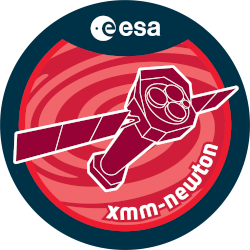

| Proposal ID | 080116 |
| Title | Properties of X-ray activity cycles on young solar-like stars: epsilon Eridanae |
| Download Data Associated to the proposal | https://nxsa.esac.esa.int/nxsa-sl/servlet/data-action-aio?obsno=0801160301 |
| DOI | https://doi.org/10.5270/esa-z9g12g5 |
| Principal Investigator, PI | Dr Beate Stelzer |
| Abstract | We propose to continue our XMM-Newton monitoring of the young, solar analogepsEri with the aim to understand dynamo cycles in the early life of the Sun.XMM-Newton has recently detected an X-ray cycle in another young solar analog,iota Hor, displaying cycle characteristics suggesting violent activity of theSun at an age of ~600 Myr. Such behavior may affect the evolution of planetatmospheres. To verify if the pecularities of the cycle on iotaHor are typicalfor the dynamos on such young stars we intend to search for the X-ray cycle ofepsEri, the second youngest star with known CaII cycle (Pcyc ~ 3.0yrs). We askhere for two snapshots (2 x 5 ksec), which we will combine with the previouslyexecuted or scheduled observations from our AO14 and AO15 programs. |
| Publications |
|
| Instrument | EMOS1, EMOS2, EPN, OM, RGS1, RGS2 |
| Temporal Coverage | 2017-08-26T15:09:47Z/2018-01-16T21:19:55Z |
| Version | 17.56_20190403_1200 |
| Mission Description | The European Space Agencys (ESA) X-ray Multi-Mirror Mission (XMM-Newton) was launched by an Ariane 504 on December 10th 1999. XMM-Newton is ESAs second cornerstone of the Horizon 2000 Science Programme. It carries 3 high throughput X-ray telescopes with an unprecedented effective area, and an optical monitor, the first flown on a X-ray observatory. The large collecting area and ability to make long uninterrupted exposures provide highly sensitive observations. Since Earths atmosphere blocks out all X-rays, only a telescope in space can detect and study celestial X-ray sources. The XMM-Newton mission is helping scientists to solve a number of cosmic mysteries, ranging from the enigmatic black holes to the origins of the Universe itself. Observing time on XMM-Newton is being made available to the scientific community, applying for observational periods on a competitive basis. |
| Creator Contact | https://www.cosmos.esa.int/web/xmm-newton/xmm-newton-helpdesk |
| Date Published | 2019-02-07T23:00:00Z |
| Last Update | 2025-08-04 |
| Keywords | "XMM", "displaying cycle characteristics", "solar analog epseri", "caii cycle pcyc", "XMM-Newton", "xray activity cycles", "xray cycle", "violent activity", "epsilon eridanae", "ao15 programs", "xmm newton", "dynamo cycles", "iota hor", "planet atmospheres", "solar analog" |
| Publisher And Registrant | European Space Agency |
| Credit Guidelines | European Space Agency, Dr Beate Stelzer, 2019, 'Properties of X-ray activity cycles on young solar-like stars: epsilon Eridanae', 17.56_20190403_1200, European Space Agency, https://doi.org/10.5270/esa-z9g12g5 |